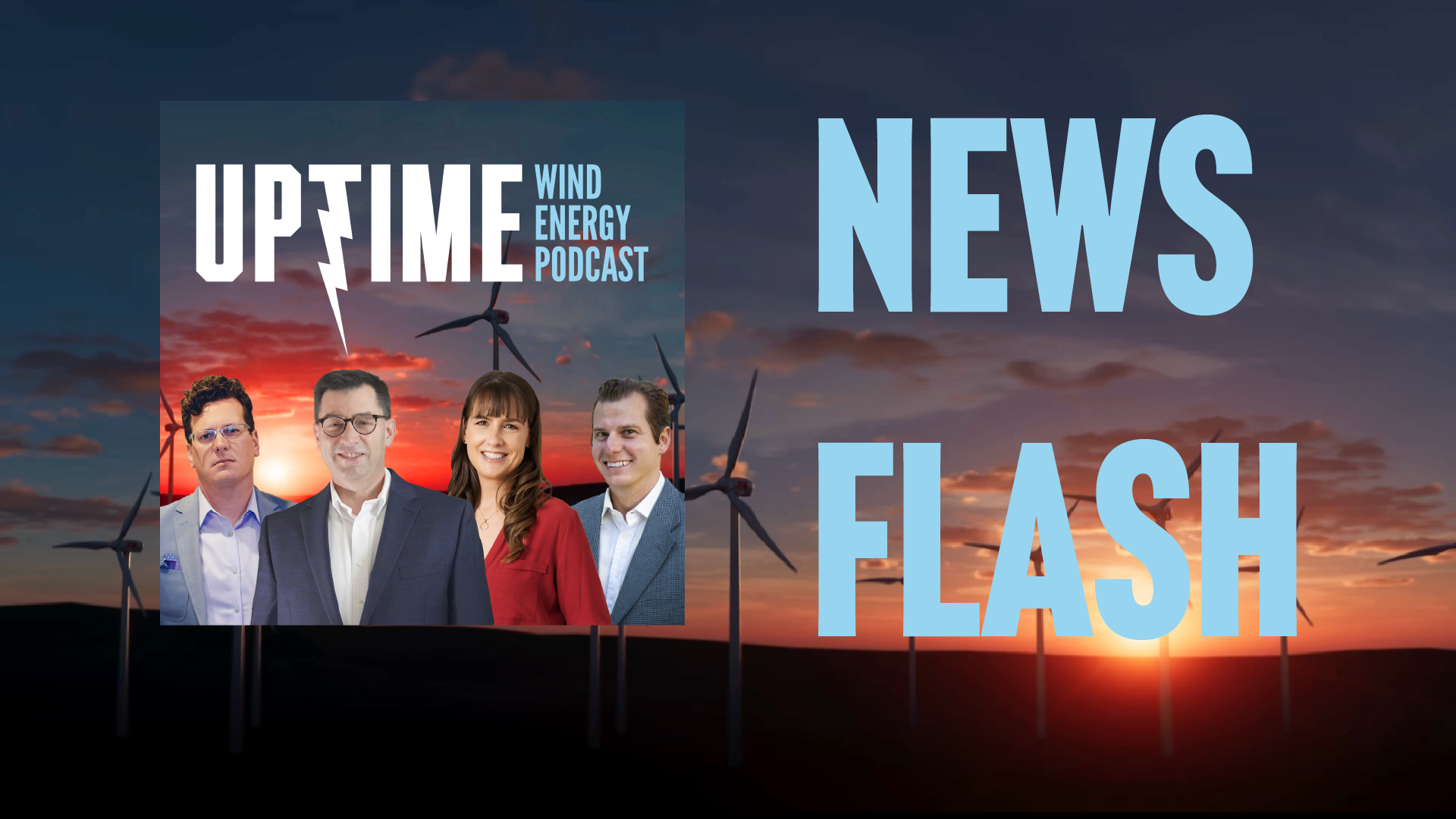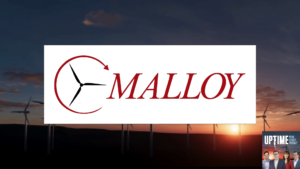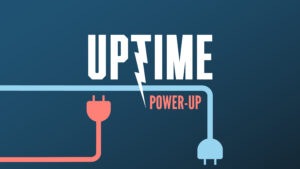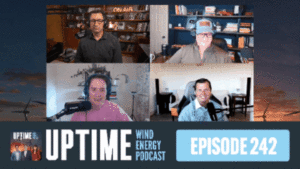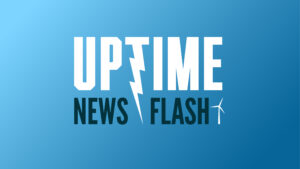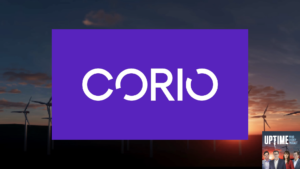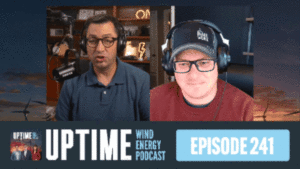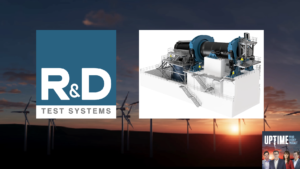Podcast: Play in new window | Download
Microsoft is partnering with Brookfield Asset Management to develop 10.5 GW of new wind and solar, Siemens Gamesa reports a €365 million loss in the 2nd quarter of 2024, WEG will begin manufacturing their 7 GW turbine platform in Minnesota, and Canadian Pension Plan Investment Board and Global Infrastructure Partners acquire Allete.
Sign up now for Uptime Tech News, our weekly email update on all things wind technology. This episode is sponsored by Weather Guard Lightning Tech. Learn more about Weather Guard’s StrikeTape Wind Turbine LPS retrofit. Follow the show on Facebook, YouTube, Twitter, Linkedin and visit Weather Guard on the web. And subscribe to Rosemary Barnes’ YouTube channel here. Have a question we can answer on the show? Email us!
Pardalote Consulting – https://www.pardaloteconsulting.com
Weather Guard Lightning Tech – www.weatherguardwind.com
Intelstor – https://www.intelstor.com
Allen Hall: I’m Allen Hall, president of Weather Guard Lightning Tech, and I’m here with the founder and CEO of IntelStor, Phil Totaro, and the chief commercial officer of Weather Guard, Joel Saxum. And this is your News Flash. News Flash is brought to you by our friends at IntelStor. If you want market intelligence that generates revenue, then book a demonstration of IntelStor at intelstor. com.
Microsoft has partnered with Canada’s Brookfield Asset Management to develop new wind and solar farms aiming to bring 10. 5 gigawatts of generating capacity online. The partnership is expected to help finance renewable electricity projects to be built between 2026 and 2030. 30 starting in the U.S. and eventually Europe. The deal is estimated to cost over 10 billion U. S. dollars, and it highlights the race to meet clean energy commitments while satisfying the growing energy demands of cloud computing and A. I. Now, Phil, we all know that A. I. is going to be expensive in the electricity world.
Everybody is worried about it. Microsoft is trying to hedge their bets at the minute. Do you expect others like an Amazon to do something similar?
Philip Totaro: Amazon’s been up until this deal, once it officially closes and they actually build and start procuring all this. This is going to be the biggest corporate renewables procurement in history.
Amazon’s been doing their fair share and was leading up until this point. But this is this is massive. So it let’s put it this way. It looks like, deals like this are going to finally get the tech sector in the mood to say, all right, we like, fixed price contracts with, some degree of certainty and, proven technology now between wind and solar particularly for cloud applications or AI applications where, it’s going to be, power intensive, I think, the tech sector in general needs needed to, and is getting more on board with this.
Even, my own company builds on AWS. We’ve, contributed to them procuring some renewables capacity as well. And we’re taking the benefit of that too.
Joel Saxum: It’s nice to see Microsoft getting involved in an early stage here, right? At the pipe, not even during the pipeline exercise, but during the pipeline build out of guys, we were going to want this, we’re going to partner with a major developer being Brookfield Renewables, who has a large capital base behind them, of course.
But at the start of it saying we want to do this because you do see the virtual PPAs and those on the corporate PPAs being, But it’s usually like when they’re about built, of course, along the time, the sales people from that energy company are shopping them. But you don’t see the agreements happen at an earlier stage like this very often.
So with Microsoft, of course, being a large consumer of power for, of course, computing, but also the cooling of these centers is going to be a large cost as well. Being a looking in, into their crystal ball and seeing that energy usage going up and up and up, they’re getting to getting engaged with a major developer at an early pipeline stage, I would look to see the next evolution of this thing being like what RWE did last year and sign a large deal with a turbine manufacturer to say, hey, we will want one gigawatts or one, one or two gigawatts of turbines in the next four years.
Can we guarantee our prices on that as well for a development pipeline? Thanks everyone.
Allen Hall: Siemens Gamesa has reported a 365 million euro loss for the second quarter of 2024. A slight improvement from the 386 million euro loss in the same period last year. The turbine manufacturer’s orders were down sharply at 881 million euros compared to 3.
6 billion euros the year prior. Onshore orders were impacted by the pause in sales activities for the 4X and 5X turbans, and profit continues to be impacted by quality issues, increased product costs, and ramp up challenges in the offshore area. Now, Phil, this has had some ramifications within the management of Siemens Gamesa also.
Philip Totaro: So they’ve Announce their CEO is leaving and they’re going to be restructuring the company, including layoffs, probably in core areas within Spain. And they’ve also announced a couple of things. One is that they’re going to be re evaluating their presence in markets like India, for instance.
You saw GE do the same thing when they started looking at pulled out of Brazil because they were looking at margins and profitability and wanted better financial returns and better financial performance. India may become a market that is, left to the the Indian players and the Chinese and Siemens Gomez is going to try and regroup in in core markets.
The other piece of this that came out was that they’re anticipating starting up sales again in August of this year. There are thereabouts so we all look forward to that and hope that they can get themselves back on track because unfortunately with this, 350 million euro, or I’m sorry, 365 million euro loss indicates is that they’re still not getting enough services revenue that’s offsetting.
Their expenses around having to fix all these blades and pay out all the liquidated damages and interruptions that they’ve had to pay out on as a result of, this quality issue.
Joel Saxum: I think in this quarterly report, the numbers that stick out to me is that 880 million in orders as compared to 3. 6 million. Billion from last year. So that’s 25 percent of the order book. That’s live right now within Siemens since this quarter last year. So expect to see them have larger loss numbers. When Q3 or Q4 revenue gets realized as compared to the year before. Now we all saw this coming. We knew it was going to happen.
Of course, when you stop selling your flagship turbine model on shore you’re going to have some revenue issues, but I think it, it actually extends a little bit further into the market than just the 4x, 5x platforms. Example, I had a conversation last week at, or this week at ACP with an operator.
Who said yeah, we’re looking at some wind farms. We regularly either by Vestas or GE. And that’s probably what we will stick with for one thing. We don’t work on it. We don’t have any Siemens in our fleet, so we don’t work on them. And also at this point in time, we’re not willing to jump into the ring.
on with a company that’s having issues. So there’s not only not selling that 4x, 5x, but the feeling around them is that the operators still aren’t looking at them during their RFPs.
Allen Hall: Brazilian industrial machinery manufacturer WEG is to enter the wind generation market in the United States. The company will utilize his factory in Minneapolis, Minnesota to manufacture its seven megawatt wind turbine platform.
Like it’s not disclosed the investment figure, but states it is not significant and is part of the approved capital budget. The Minneapolis plant with 45, 000 square meters and around 200 employees will start supplying equipment from 2026. In the meantime, we will commence commercial activities to secure sales contracts and develop the local supply chain while maintaining its commitment to win.
generation in Brazil and India. Now, Phil, we were just in Minneapolis for American Clean Power. This is a big discussion on the show floor.
Philip Totaro: Absolutely. And it’s actually pretty interesting news for a couple of reasons. One obviously WEG’s been developing turbines down in Brazil for a little more than 12 years now.
And started off with a license from Northern Power Systems on a turbine, evolved it into a three and then a four and then jumped up to a seven now there’s plenty of kind of opportunity down in Brazil for. A seven megawatt turbine because they’ve got a lot of open space where they can stick those things.
So bringing it to the US market is going to be interesting to see what the appetite is for a turbine that big. However, the one thing that came out of the clean power event was the fact that every. I spoke to said, we want a third option, knowing that GE and Vestas are dominating the U S market at this point.
And that I don’t know what their perception issue is with Nord X, even though it looks like Nord X actually seems fine. It might be some issues with their their services division, but their turbines actually perform pretty well. But like we just talked about with Siemens Gamesa pulling back from selling.
an opportunity open for companies like Weg to step into the U S market. And it’s, it will be something that’s welcomed by the entire market if and when they can get Something bankable and proven into this market. So that’s going to start with them, getting a prototype site up and running, getting their, type certification for, that would be applicable for the U. S. market in place and making sure that the financiers understand that, they’re a third bankable option besides just GE and Vestas.
Joel Saxum: Yeah, interesting thing here is that to enter the market, you almost have to find a gap in it, right? So there, we know that there’s 2 megawatt, 2. 5, 2. 8, 3, 3. 4, 4x, 5x, and now even GE announcing a 6 megawatt quote unquote, workhorse machine at ACP last year.
This 7 megawatt machine fills a hole that doesn’t exist in the market in the U. S. right now. Because I think the big Nordex one, correct me if I’m wrong, fills a hole. That one’s six, isn’t it? Or five and a half? Correct. Not saying it’s filling a gap, because there isn’t a gap there, they’re actually in a spot where there is nobody right now.
That seven megawatt space, if someone wants a seven megawatt machine, This is the machine they got to buy. There’s an opportunity there, but we’ll see how it develops.
Allen Hall: Canadian pension plan investment board and global infrastructure partners have entered into an agreement to acquire us energy firm elite for 6.
2 billion, including the assumption of debt elite. And it’s. Subsidiaries focus on driving clean energy transition through expanding renewables, reducing carbon emissions, enhancing grid resiliency, and driving innovation. The partnership with CPP Investments and GIP will provide Elite with access to significant capital for its planned investments while remaining committed to its existing customers, communities, and employees.
The acquisition is expected to generate substantial value for Elite stakeholders and further GIP’s commitment to serving growing market needs. Now, Phil, this one was unexpected when it was announced. Elite obviously has a really good reputation in the United States. It seems like a nice investment for CPP and GIP.
Philip Totaro: Absolutely, and it gives the Canadian Pension Plan Investment Board and GIP an opportunity to continue growing their footprint, particularly the CPP IB because they’ve got, obviously investments in Canadian renewables and renewables. all over
the place, so the, this, just continues a theme that we’ve been talking about probably for about nine months on the show where infrastructure funds are definitely plowing a lot more money into acquiring. Pipelines of deals sorry, acquiring pipelines of projects through these acquisition deals, acquiring operating portfolios and even companies that can compliment, we go back to a deal like Macquarie acquiring a company like Onyx Insight somebody who can provide them with, some insight into asset management and performance.
This deal for elite is a solid one. 50, more than 52 percent of their portfolio operates at or above a P50 energy yield, according to our analytics at Intel store. It’s a pretty healthy and robust portfolio. It was just wind alone was about $3 billion worth of CapEx investment.
Plus when you add in the solar, I think, the 6 billion plus is a pretty good price tag for for what Elite brings to the table.
Joel Saxum: Something to remember here that Phil actually touched on briefly there is G. I. P. is backed by BlackRock. Okay? BlackRock, of course, one of the, is the biggest investment vehicle in the world, trillions of dollars in assets.
But they recently came out and said, we’re going to put 12 billion into the renewable energy space and purchasing G. I. P. So what we’re seeing here is G. I. P. and the BlackRock money continuing to filter down through other markets and being the capital being utilized to further the clean energy transition.



